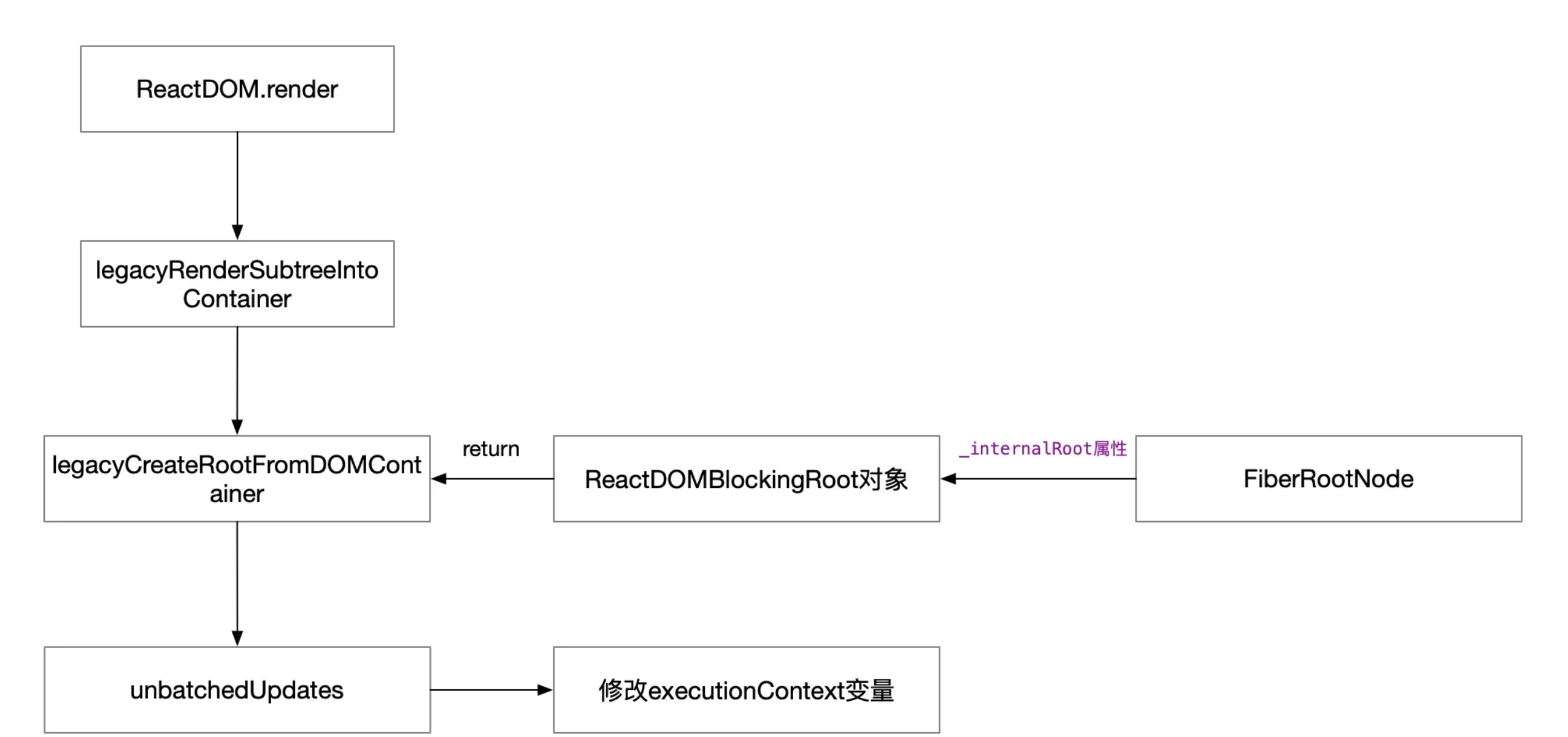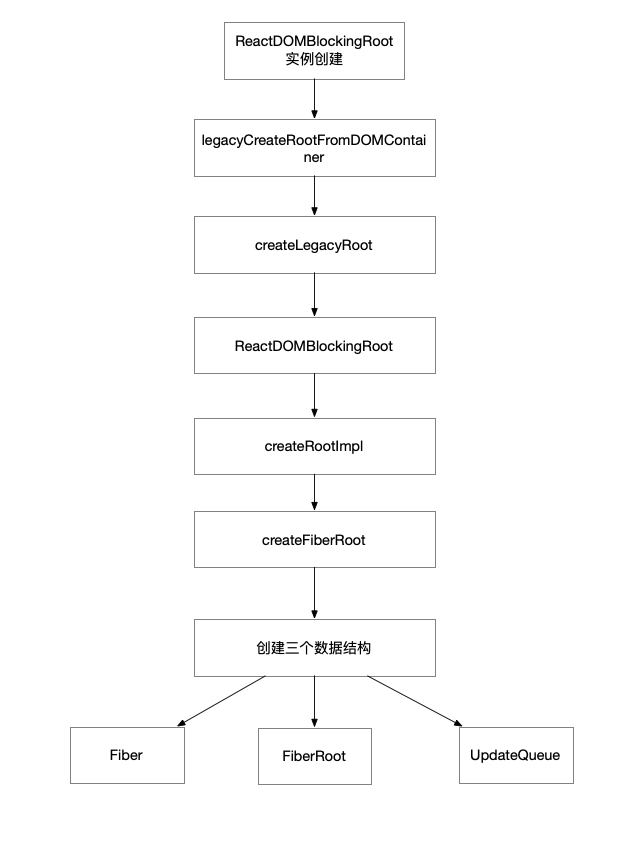ReactDOM.render
ReactDOM.render(element, container[, callback])
eg:
const root = document.createElement('div')
root.id = 'app'
document.body.appendChild(root)
const App = (<h2>Hello World!</h2>)
render(App, root)
在提供的 container 里渲染一个 React 元素,并返回对该组件的引用(或者针对无状态组件返回 null)
如果 React 元素之前已经在 container 里渲染过,这将会对其执行更新操作,并仅会在必要时改变 DOM 以映射最新的 React 元素
如果提供了可选的回调函数,该回调将在组件被渲染或更新之后被执行
WARNING
ReactDOM.render() 会控制你传入容器节点里的内容。当首次调用时,容器节点里的所有 DOM 元素都会被替换,后续的调用则会使用 React 的 DOM 差分算法(DOM diffing algorithm)进行高效的更新。
ReactDOM.render() 不会修改容器节点(只会修改容器的子节点)。可以在不覆盖现有子节点的情况下,将组件插入已有的 DOM 节点中。
ReactDOM.render() 目前会返回对根组件 ReactComponent 实例的引用。 但是,目前应该避免使用返回的引用,因为它是历史遗留下来的内容,而且在未来版本的 React 中,组件渲染在某些情况下可能会是异步的。 如果你真的需要获得对根组件 ReactComponent 实例的引用,那么推荐为根元素添加 callback ref。
使用 ReactDOM.render() 对服务端渲染容器进行 hydrate 操作的方式已经被废弃,并且会在 React 17 被移除。作为替代,请使用 hydrate()。
ReactDOM.render 用于初次渲染时将 React 应用挂载在 DOM 元素上
对于 React 项目,平时会以 jsx 的格式进行开发,但是 jsx 并不是标准的格式,所以需要 label 进行转议,以上面 eg 代码为例,最终会转换成以下形式的代码:
const root = document.createElement("div");
root.id = "app";
document.body.appendChild(root);
const App = /*#__PURE__*/ React.createElement("h2", null, "Hello World!");
render(App, root);
jsx 编写的组件会转议成 React.createElement 的形式,所以 React 最终是通过 React.createElement 来创建一个 reactElement
在现在的 React 中 reactElement 也被称为是 fiber 树,fiber树 是 DOM 树的数据模型
源码跟踪
ReactDom.render 的源码定义:
function render(element, container, callback) {
// 忽略部分代码
return legacyRenderSubtreeIntoContainer(null, element, container, false, callback);
}
执行 ReactDOM.render 返回的 legacyRenderSubtreeIntoContainer 方法函数调用的结果,该方法传入五个参数:
null:parentComponentelement:ReactDOM.render的第一个参数,React 元素也就是一个ReactElementcontainer:ReactDOM.render的第二个参数,挂载 React 元素的一个 element容器false:forceHydrate服务端渲染用的,可以忽略callback:ReactDOM.render的第三个参数,一个回调函数
function legacyRenderSubtreeIntoContainer(parentComponent, children, container, forceHydrate, callback) {
var root = container._reactRootContainer;
var fiberRoot;
// 首次执行时 `container` 是要挂载的目标节点,此时它是没有 `_reactRootContainer` 属性的
if (!root) {
// 创建一个ReactRooter
root = container._reactRootContainer = legacyCreateRootFromDOMContainer(container, forceHydrate);
fiberRoot = root._internalRoot;
//初始化安装不需要批量更新
unbatchedUpdates(function () {
updateContainer(children, fiberRoot, parentComponent, callback);
});
} else { // 非首次执行
fiberRoot = root._internalRoot;
updateContainer(children, fiberRoot, parentComponent, callback);
}
return getPublicRootInstance(fiberRoot); // 返回fiberRoot
}
legacyRenderSubtreeIntoContainer() (翻译成啥啥渲染子数到容器),在当前例子中执行这个函数时传进来的参数为:
首次渲染
container._reactRootContainer肯定为空调用
legacyCreateRootFromDOMContainer函数创建ReactDOMBlockingRoot赋值给root和container._reactRootContainer,函数内也同时创建了fiberRootNode保存在_internalRoot属性中赋值
fiberRootNode给fiberRoot调用
unbatchedUpdates函数,取消批量更新

legacyCreateRootFromDOMContainer
function legacyCreateRootFromDOMContainer(container, forceHydrate) {
// 判断是否服务端渲染
var shouldHydrate = forceHydrate || shouldHydrateDueToLegacyHeuristic(container);
if (!shouldHydrate) {
var rootSibling;
// 删除container中的内容
while (rootSibling = container.lastChild) {
{
container.removeChild(rootSibling);
}
}
return createLegacyRoot(container, shouldHydrate ? {
hydrate: true
} : undefined);
}
}
这个函数其实就做了一件事,就是遍历删除
container中的内容然后调用
createLegacyRoot生成 ReactRooter
createLegacyRoot
function createLegacyRoot(container, options) {
// createLegacyRoot 方法返回 ReactDOMBlockingRoot 的实例
return new ReactDOMBlockingRoot(container, LegacyRoot, options);
}
new 了一个 ReactDOMBlockingRoot 传递了三个参数
container:DOM Element
LegacyRoot:一个常量,这里表示
blockingRootoptions: 可以忽略,就是那个
hydrate
ReactDOMBlockingRoot
function ReactDOMBlockingRoot(container, tag, options) {
this._internalRoot = createRootImpl(container, tag, options);
}
在 _internalRoot 赋值 createRootImpl 函数调用的结果,在之前 legacyRenderSubtreeIntoContainer 方法中 fiberRoot = root._internalRoot 就是这里来的
createRootImpl
function createRootImpl(container, tag, options) {
// Tag is either LegacyRoot or Concurrent Root
var hydrate = options != null && options.hydrate === true;
var hydrationCallbacks = options != null && options.hydrationOptions || null;
// 创建React容器 fiberRootNode
var root = createContainer(container, tag, hydrate);
// 将fiberNode 挂载到container对象上
markContainerAsRoot(root.current, container);
return root;
}
// 给当前 DOM 节点标记一个 internalContainerInstanceKey 属性
// internalContainerInstanceKey=__reactContainere$wyxea1uq6a
function markContainerAsRoot(hostRoot, node) {
node[internalContainerInstanceKey] = hostRoot;
}
调用
createContainer创建 FiberNode 对象markContainerAsRoot函数只是将最终返回的 FiberRoot对象上的current属性挂载到了container上面
createContainer
// 创建 FiberRoot
function createContainer(containerInfo, tag, hydrate, hydrationCallbacks) {
// 调用createFiberRoot
return createFiberRoot(containerInfo, tag, hydrate, hydrationCallbacks);
}
// createFiberRoot
function createFiberRoot(containerInfo, tag, hydrate, hydrationCallbacks) {
// 创建fiber树root节点
var root = new FiberRootNode(containerInfo, tag, hydrate);
var uninitializedFiber = createHostRootFiber(tag);
root.current = uninitializedFiber;
uninitializedFiber.stateNode = root;
initializeUpdateQueue(uninitializedFiber);
return root;
}
new FiberRootNode: 就是实例化了一个FiberRoot对象createHostRootFiber:创建的是一个Fiber对象,这个Fiber也经常被叫 RootFiber ,并且保存到FiberRoot.current下面initializeUpdateQueue:创建一个更新队列,挂载fiber.updateQueue下面最后进行返回
root
// tag = 0
function createHostRootFiber(tag) {
var mode;
if (tag === ConcurrentRoot) {
mode = ConcurrentMode | BlockingMode | StrictMode;
} else if (tag === BlockingRoot) {
mode = BlockingMode | StrictMode;
} else {
// 执行到这里
mode = NoMode;
}
// 此时 mode=0
return createFiber(HostRoot, null, null, mode);
}
// createFiber 创建 fiber
var createFiber = function (tag, pendingProps, key, mode) {
// $FlowFixMe: the shapes are exact here but Flow doesn't like constructors
return new FiberNode(tag, pendingProps, key, mode);
};
整理一个流程

小结
root = container._reactRootContainer = ReactDOMBlockingRoot
root._internalRoot = fiberRootNode
root 对象(container._reactRootContainer)上有一个 _internalRoot 属性,这个 _internalRoot 也就是一个 FiberRootNode 对象,其中包含一个 current 属性,current 对象是一个 Fiber节点,不仅如此,它还是当前 Fiber 树的头部节点
所以在执行 unbatchedUpdates() 之前 render 主要是 完成 Fiber 树中基本实体的创建 其中
fiberRoot 的关联对象是真实 DOM 的容器节点
rootFiber 则作为虚拟 DOM 的根节点存在
接下来,fiberRoot 将和 ReactDOM.render 方法的其他入参一起,被传入 updateContainer 方法,从而形成一个回调。这个回调,正是接下来要调用的 unbatchedUpdates 方法的入参
unbatchedUpdates
function unbatchedUpdates(fn, a) {
var prevExecutionContext = executionContext;
// 这里是对上下文的处理,不用关注
// 去除executionContext上的BatchedContext
executionContext &= ~BatchedContext;
// 往executionContext上添加LegacyUnbatchedContext
executionContext |= LegacyUnbatchedContext;
try {
return fn(a);
} finally {
// finally 逻辑里是对回调队列的处理,此处不用太关注
executionContext = prevExecutionContext;
if (executionContext === NoContext) {
// 刷新同步任务队列
flushSyncCallbackQueue();
}
}
}
修改
executionContext这个变量,让他含有LegacyUnbatchedContext,也就是非批量更新模式然后就是
fn()执行传入的回调函数updateContainer最后会执行
flushSyncCallbackQueue,刷新同步任务队列
updateContainer
此时参数依次为:
children:App 组件fiberRoot: 上一步创建的FilberRootparentComponent:nullcallback:undefined
function updateContainer(element, container, parentComponent, callback) {
{
onScheduleRoot(container, element);
}
var current$1 = container.current;
// 计算新开始的时间
var currentTime = requestCurrentTimeForUpdate();
// 创建优先级
var suspenseConfig = requestCurrentSuspenseConfig();
// 计算过期时间
var expirationTime = computeExpirationForFiber(currentTime, current$1, suspenseConfig);
// 由于parentComponent为null,所以返回空对象{}
var context = getContextForSubtree(parentComponent);
if (container.context === null) {
container.context = context;
} else {
container.pendingContext = context;
}
{
if (isRendering && current !== null && !didWarnAboutNestedUpdates) {
didWarnAboutNestedUpdates = true;
}
}
// 结合 suspenseConfig(优先级)信息,创建 update 对象,一个 update 对象意味着一个更新
var update = createUpdate(expirationTime, suspenseConfig); // Caution: React DevTools currently depends on this property
// update 的 payload 对应的是一个 React 元素
update.payload = {
element: element
};
// 处理 callback,这个 callback 其实就是我们调用 ReactDOM.render 时传入的 callback
callback = callback === undefined ? null : callback;
if (callback !== null) {
{
if (typeof callback !== 'function') {
error('render(...): Expected the last optional `callback` argument to be a ' + 'function. Instead received: %s.', callback);
}
}
update.callback = callback;
}
// 将 update 入队
// 一整个React应用中,会有多次更新,而这多次更新均在更新队列中
enqueueUpdate(current$1, update);
//进行任务调度
//当React进行Update后,就要进行调度
//即 根据任务的优先级去调度任务
//先执行优先级高的任务,
scheduleWork(current$1, expirationTime);
return expirationTime;
}
updateContainer 函数最关键的事情可以总结为三件:
创建当前 Fiber 节点的 suspenseConfig(优先级)
结合 suspenseConfig(优先级),创建当前 Fiber 节点的
update对象,并将其入队调度当前节点(rootFiber)。
scheduleUpdateOnFiber 函数的任务是调度当前节点的更新。在这个函数中,会处理一系列与优先级、打断操作相关的逻辑。但是在 ReactDOM.render 发起的首次渲染链路中,这些意义都不大,因为这个渲染过程其实是同步的
具体的更新过程另外放个章节研究
总结
ReactDOM.render 做的事情核心就做两件事件
创建 FiberNode
发布调度任务,进行更新